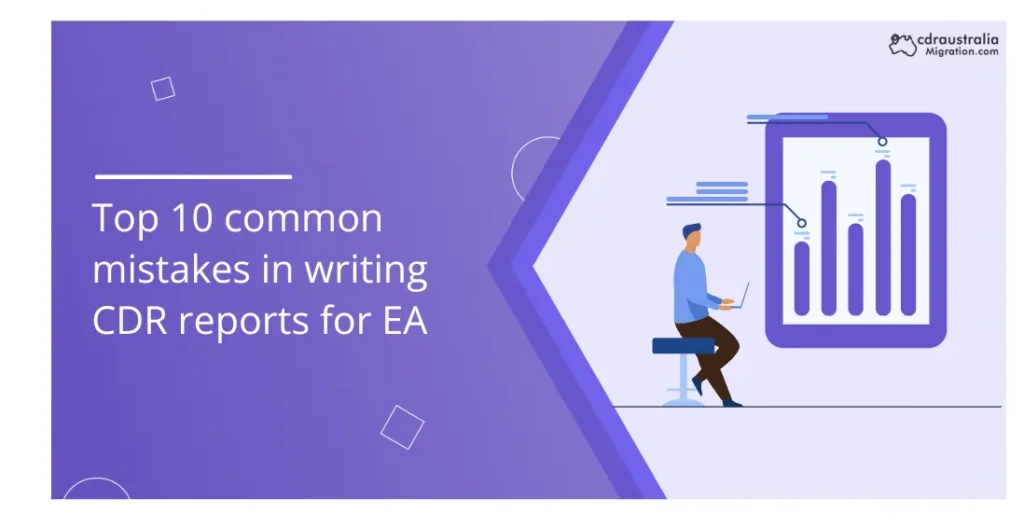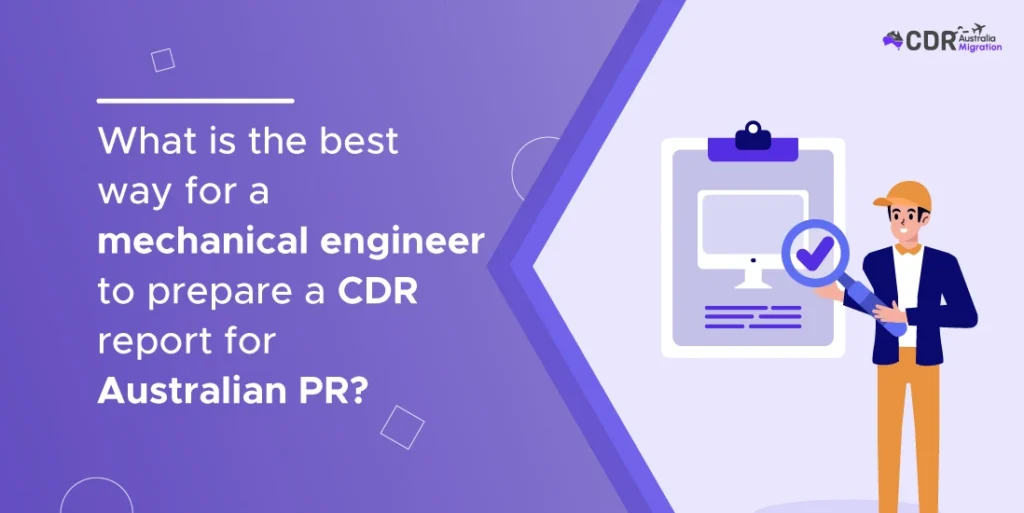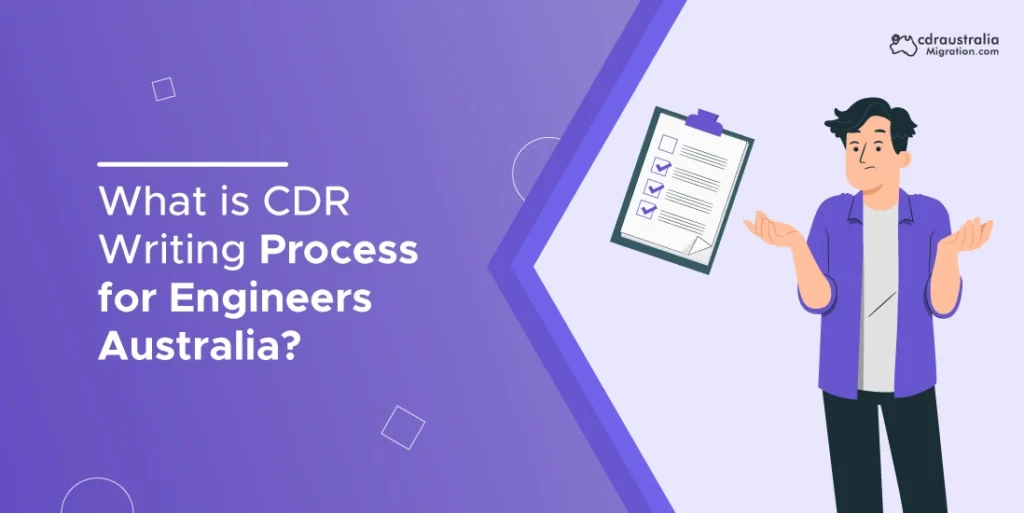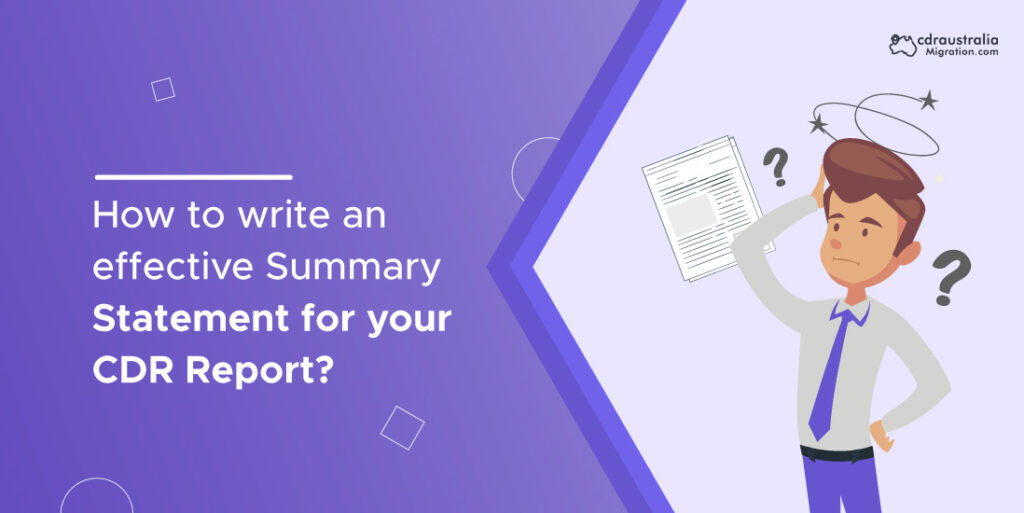Top 10 common mistakes in writing CDR reports for EA
Writing a Competency Demonstration Report (CDR) is a critical step for engineers aiming to migrate to Australia under the skilled migration program. Engineers Australia (EA), the assessing authority, requires a well-structured CDR report to evaluate your technical skills, experience, and competency against Australian standards. However, even seasoned professionals often stumble due to avoidable errors. In this guide, we’ll explore the top 10 common mistakes in writing CDR reports for EA, along with actionable tips to ensure your application stands out. Whether you’re a civil, mechanical, or electrical engineer, avoiding these pitfalls will save you time, stress, and potential rejection. 🔑 Key Highlights The CDR Report is Crucial: This document stands as the Australian migration tool, which demonstrates your professional talents, together with your expertise. Structure Must Be Followed: The required layout for the CDR report must be followed because ignoring it represents one of the ten major mistakes identified in CDR writing. Avoid Plagiarism: Plagiarism in a CDR report represents a major offence that might lead to a migration ban for ten years. Don’t Skip the Summary Statement: The summary statement represents one of the most frequent CDR report mistakes because it connects your episodes to EA’s competencies, which ensures your application will be approved. Top 10 common mistakes in writing CDR reports for EA Here are the top 10 common mistakes in writing CDR reports for EA: 1. Ignoring EA’s Formatting and Structural Guidelines Why It’s a Mistake EA has strict guidelines for structuring CDR reports, including three Career Episodes, a Continuing Professional Development (CPD) statement, and a Summary Statement. Deviating from this format—such as merging sections or omitting key details—can lead to instant rejection. How to Avoid It Follow the EA Migration Skills Assessment Handbook to the letter. Use clear headings (e.g., Career Episode 1: Project XYZ). Stick to word limits: ~1,000–2,500 words per Career Episode, 500 words for CPD, and 1,000 words for the Summary Statement. 2. Plagiarism: The Silent Career Killer Why It’s a Mistake EA uses advanced plagiarism-checking tools like Turnitin. Copying content from sample CDRS, colleagues, or online sources can result in a 10-year ban from reapplying. How to Avoid It Write from scratch using your own experiences. Use plagiarism checkers (e.g., Grammarly Premium) before submitting. Paraphrase technical concepts instead of copying textbooks. 3. Overloading with Technical Jargon Why It’s a Mistake While a CDR report should demonstrate technical expertise, excessive jargon can confuse assessors. Remember, they evaluate your ability to communicate clearly. How to Avoid It Explain acronyms (e.g., “BIM (Building Information Modeling)”). Use simple language to describe complex projects. Focus on outcomes rather than overly detailed methodologies. 4. Vague Project Descriptions Why It’s a Mistake Assessors need to understand your role in a project. Statements like “I contributed to the team” lack depth and fail to showcase your competencies. How to Avoid It Use the STAR method (Situation, Task, Action, Result). Highlight challenges faced and how you resolved them. Quantify achievements (e.g., “Designed a wastewater system serving 5,000 households”). 5. Failing to Address EA’s Competency Elements Why It’s a Mistake EA evaluates 16 competency elements across four categories (Engineering Knowledge, Problem-Solving, etc.). Missing even one element can lead to failure. How to Avoid It Map each Career Episode to specific competencies. Use phrases like “This demonstrates my ability to [competency]…”. Review EA’s Stage 1 Competency Standards for clarity. 6. Exceeding Word Limits Why It’s a Mistake EA imposes strict word counts to assess conciseness. Submitting a 3,000-word Career Episode signals poor prioritisation skills. How to Avoid It Edit ruthlessly: Remove redundant details. Use tables or bullet points for technical specs (if allowed). Prioritize quality over quantity. 7. Neglecting Proofreading Why It’s a Mistake Typos, grammatical errors, or inconsistent fonts make your report look unprofessional. First impressions matter! How to Avoid It Use tools like Hemingway Editor for readability. Print the report and read it aloud. Ask a peer or professional editor to review it. 8. Hiding Your Contributions Why It’s a Mistake EA wants to assess your skills, not your team’s. Using “we” instead of “I” dilutes your accountability. How to Avoid It Start sentences with “I designed…” or “My responsibility included…”. Differentiate your tasks from the team’s efforts. Include supervisor testimonials (if available). 9. Skipping the Summary Statement Why It’s a Mistake The Summary Statement cross-references your Career Episodes with EA’s competencies. Missing this step leaves assessors guessing. How to Avoid It Use EA’s template for the Summary Statement. Number paragraphs to match Career Episodes. Be explicit: “Paragraph 3.2 demonstrates Engineering Knowledge (PE1).” 10. Overlooking MSA Requirements Why It’s a Mistake The CDR report is part of the broader Migration Skills Assessment (MSA). Failing to align it with visa requirements (e.g., ANZSCO codes) can derail your application. How to Avoid It Confirm your nominated occupation’s ANZSCO code. Ensure your CDR report reflects the skill level required in Australia. Double-check MSA checklist items before submission. Conclusion Writing CDR reports for EA is a careful process that demands attention to detail, originality, and a deep understanding of engineering competencies. By avoiding these 10 mistakes – from plagiarism to poor structuring- and highlighting your engineering contributions, you’ll enhance your chances of a positive assessment. Remember, your CDR report isn’t just a document; it’s your professional story. Take the time to craft it thoughtfully, seek feedback, and align it with EA’s expectations. FAQ Q1: Can I reuse content from my resume in the CDR report? A: No. The CDR requires detailed narratives, not bullet points. Always expand on your role and skills. Q2: How long does it take to write a CDR report? A: Ideally, 4–6 weeks. Rushing leads to errors! Q3: Are CDR report samples helpful? A: Yes, but use them for structure inspiration only—never copy. Q4: What if my application is rejected? A: EA allows reapplication after addressing feedback. Fix errors and resubmit. Q5: Should I hire a professional writer? A: If you’re unsure, consider it. Ensure they’re familiar with EA’s guidelines.
Top 10 common mistakes in writing CDR reports for EA Read More »






